For women, taking care of their bodies is essential for good physical and mental health. Regular exercise not only helps maintain a healthy weight and prevent chronic disease, but it can also be an effective tool for toning and strengthening abdominal muscles and trimming the waist, which can improve physical appearance and boost self-esteem.
It is important to remember that muscle tone and definition do not depend solely on exercise, but also on a healthy diet and the body composition of each person. Therefore, a combination of resistance exercises and a proper diet are important to achieve the goals of toning and muscle definition.
In addition to the aesthetic benefits, toning the abdomen and trimming the waist can also have benefits for general health. A slim, toned waistline can help prevent obesity-related diseases like type 2 diabetes and heart disease. It can also improve posture and reduce the risk of back injury.
Finally, it's important to remember that every body is unique and results may vary based on genetics, lifestyle, and other factors. Don't be discouraged if you don't see immediate results and remember that patience and consistency are key to achieving our goals.
What factors influence to achieve a marked waist?
The factors that most influence our goal of reducing the waist are diet and exercise. It has been shown that a good sports routine and a healthy diet favor the loss of those extra kilos that we want to eliminate.
But of course there are other factors that can affect our goal of achieving a flat abdomen such as organ function, lack of sleep and even hormonal factors.
It is also necessary to say that there are genetic predispositions to have that waist that we want so much. Some women can develop it naturally and without much exercise or problems, while other women who diet and exercise do not have very visible results.
Despite this, we recommend you follow our exercise routine to achieve a small waist and a flat abdomen.
What exercises are good to define the abdomen and mark the waist?
Plate with rotation
The rotating plank is an excellent exercise for strengthening and toning the abdominals, obliques, and lower back.
- Start in a high plank position with your hands placed directly under your shoulders and your legs extended behind you.
- Make sure your body forms a straight line from your heels to your head. Be sure to keep your core tight and your shoulders away from your ears.
- Twist your body to the left and raise your left hand toward the ceiling, balancing on the right hand and on your toes.
- Hold for a few seconds, then slowly return to the starting position.
- Repeat the movement to the right side, raising your right hand toward the ceiling.
- Continue to alternate sides, maintaining balance and body alignment at all times.
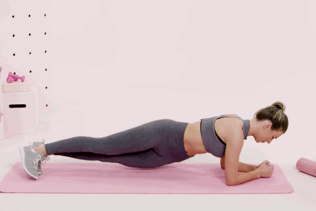
Russian twists
Russian twists help strengthen the obliques.
- Sit on the floor with knees bent and feet supported on the ground. Lean back slightly until you feel your core engaged.
- Lift your feet off the ground and cross your ankles. Knees should be aligned with hips.
- Extend your arms in front of you and clasp your hands together.
- Rotate your torso to the right, bringing your hands towards that side and touching the ground beside your right hip. Keep your abs tight at all times.
- Return to center and then rotate to the left, touching the ground beside your left hip.
- Continue alternating sides, holding the position for a few seconds before returning to center.
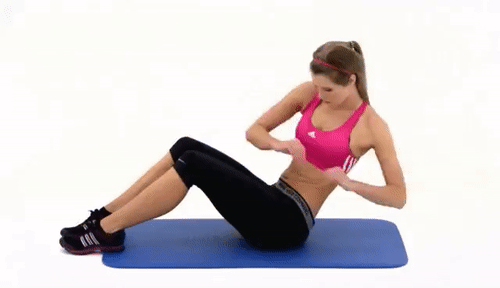
Plank
The plank is a full-body exercise that can help strengthen the core, shoulders, arms, and legs muscles. Here is how to properly perform a plank:
- Start in a plank position with your arms extended and your hands placed on the ground directly under your shoulders. Make sure your fingers are spread apart and pointing forward.
- Keep your feet together and your toes pointing down, pressing your heels back.
- Engage your core muscles by tightening your abs and keeping your back straight. Don't let your hips sag or lift.
- Keep your head in line with your spine and look down at the floor.
- Hold this position for at least 30 seconds or until you can no longer maintain proper form.
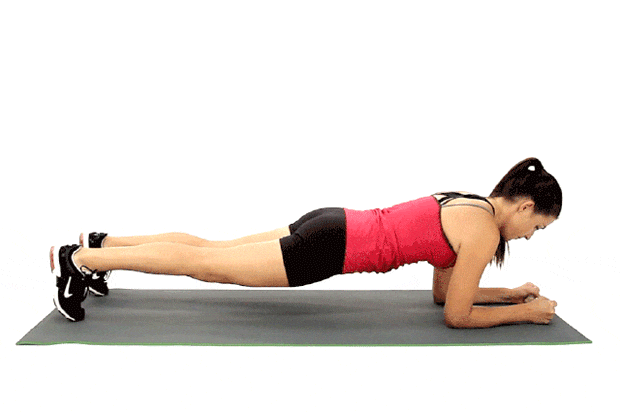
Jumping Jacks
Jumping jacks are an effective and easy warm-up exercise that involves jumping and stretching your arms and legs.
- Start standing with your feet together and your arms at your sides.
- Jump and extend your arms up while separating your legs to a slightly wider than shoulder-width distance.
- Land softly on the balls of your feet, making sure to keep your knees slightly bent.
- Immediately jump again, bringing your arms down and bringing your legs back together.
- Continue jumping and separating your legs, extending and lowering your arms with each jump.
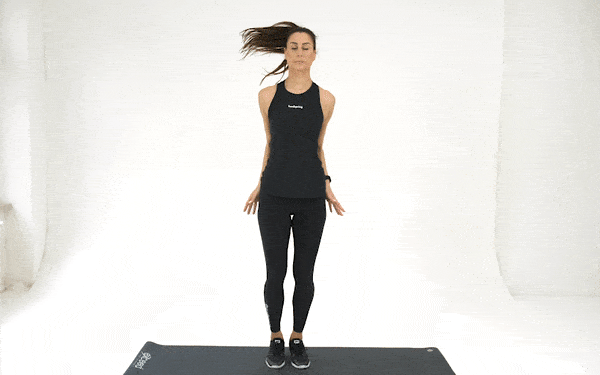
Side Plank with Hip Raise
The side plank with hip raise is an effective exercise for strengthening the core, glutes, and legs muscles.
- Start by lying on your right side with your legs together and extended.
- Lift your body so that your weight rests on your right forearm and the outside of your right foot. Keep your forearm in a straight line under your shoulder to support your body.
- Lift your hip off the ground, forming a straight line from your shoulders to your feet.
- Hold the position for a few seconds and then lower your hip back to the ground.
- Repeat the exercise several times and then switch sides.
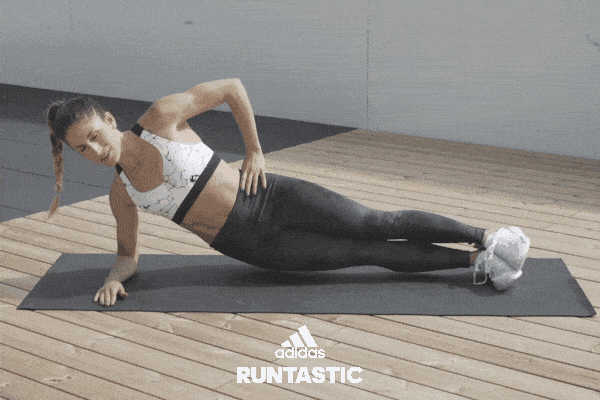
Squat
The squat is an effective exercise for strengthening the muscles in the legs, glutes, and core.
- Start standing with feet shoulder-width apart and toes pointing slightly outward.
- Look forward and keep your back straight as you bend your knees and lower your body as if sitting in a chair. Make sure your knees point in the same direction as your toes.
- Lower your body until your thighs are parallel to the ground or until your knees form a 90-degree angle. If necessary, adjust your foot position to ensure your knees do not extend beyond your toes.
- Hold the position for a few seconds and then extend your legs and return to the standing position.
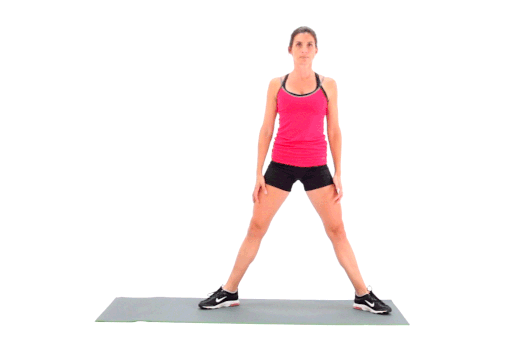
Lying bicycle
The lying bicycle is an exercise that targets the oblique and rectus abdominal muscles, as well as the muscles in the hips and legs.
- Lie on your back on a mat with your hands behind your head, legs raised, and knees bent at a 90-degree angle.
- Lift your right shoulder and left knee simultaneously, bringing your right elbow toward your left knee while extending your right leg.
- Alternate sides, lifting your left shoulder and right knee while bringing your left elbow toward your right knee while extending your left leg.
- Continue alternating sides in a pedaling motion, keeping your head and shoulders elevated at all times.
- Perform the exercise for several repetitions.

Circles with the Waist
Circles with the waist are a mobility exercise that focuses on the core muscles, especially the obliques and abdominals.
- Stand with your feet shoulder-width apart and place your hands on your hips.
- Slowly begin to move your hips forward in a circular motion clockwise, keeping your feet in the same place.
- Continue moving your hips in circles to the right for several repetitions.
- Then, change direction and move your hips backward in a circular motion counterclockwise.
- Continue moving your hips in circles to the left for several repetitions.
- Perform the exercise for several minutes.
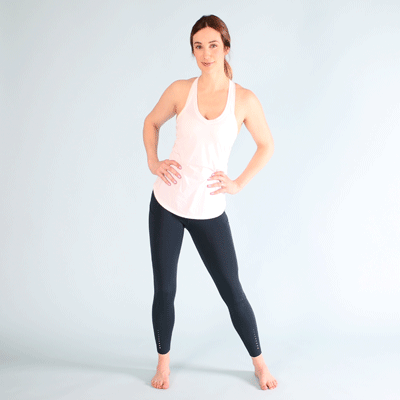
Superman Plank
The Superman plank is a core and back strengthening exercise performed in a face-down position.
- Start by lying face down on an exercise mat or on the floor. Extend your arms forward and your legs back, keeping your arms and legs parallel to the ground.
- Make sure your neck and spine are aligned, keeping your neck in a neutral position.
- Simultaneously, lift your arms, legs, and chest off the ground. Hold the position for several seconds, focusing on contracting the muscles of your back and core to maintain stability.
- Then, slowly lower your arms, legs, and chest to the ground.
- Repeat the exercise for several repetitions.

Side Plank
The side plank is a core strengthening exercise that targets the oblique abdominal muscles and hip muscles.
- Start by lying on your side with your elbow and forearm resting on the ground and your legs together and extended to one side. The forearm should be perpendicular to the body and the elbow under the shoulder.
- Make sure your neck and spine are aligned, keeping your neck in a neutral position.
- Simultaneously, lift your hips off the ground, keeping the body in a straight line from head to toe. Hold the position for several seconds, focusing on contracting the core muscles to maintain stability.
- Then, slowly lower the hips to the ground.
- Repeat the exercise several times on the same side before switching positions.
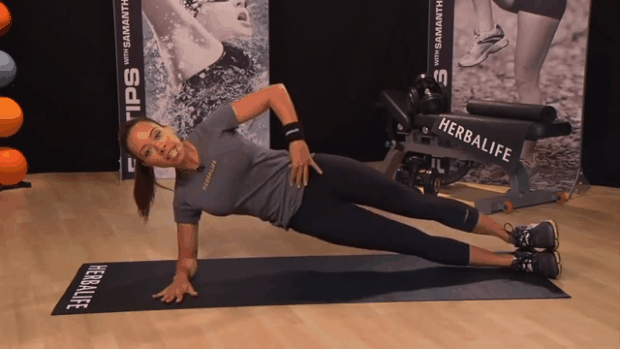
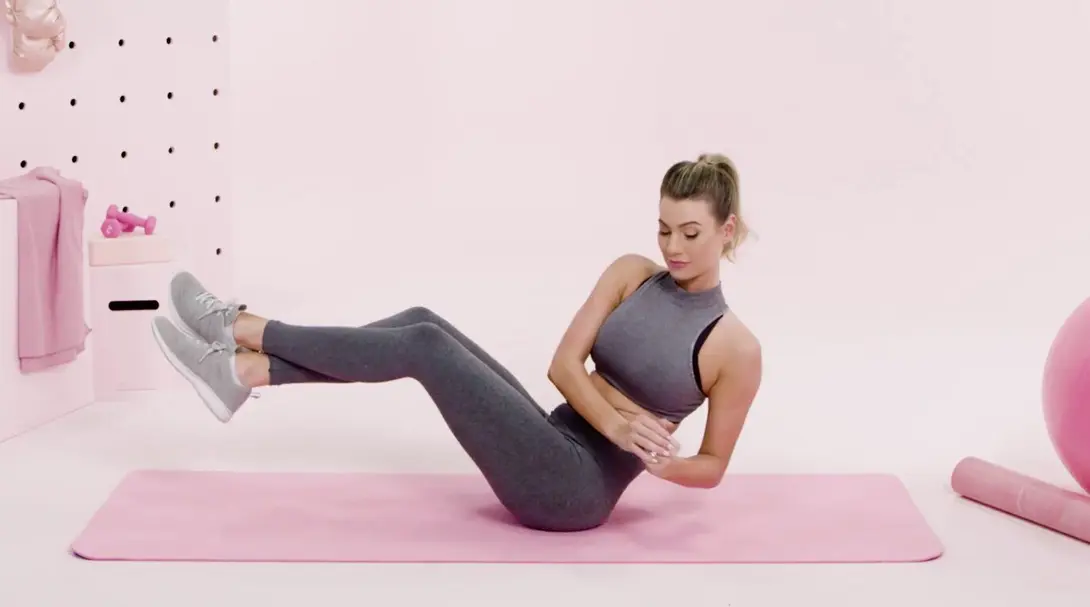

Comentarios